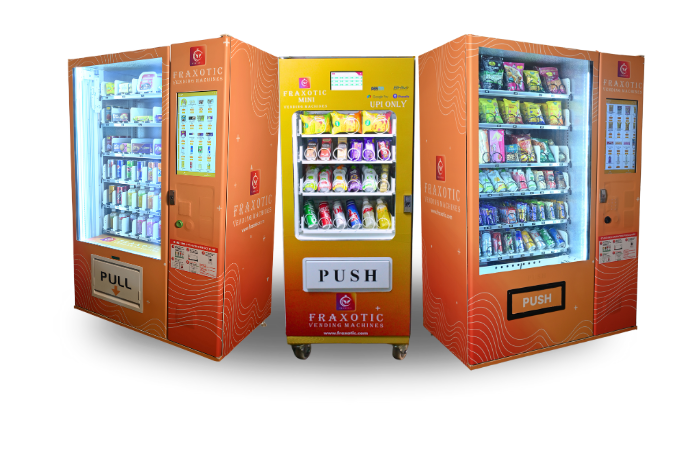
How Much Space Does a Vending Machine Need?
May 14, 2024
What Sells Best in Vending Machines?
May 16, 2024Vending machines have established themselves as crucial components of modern life, delivering instant access to a broad array of products with remarkable convenience. Beverage vending machines, in particular, stand out for their ability to provide quick refreshment to consumers on the go. If you have ever wondered, “How many drinks can a vending machine hold?” this article will provide comprehensive insights. We will explore the various factors that determine the capacity of vending machines, the different types available, and key considerations for owners and operators aiming to maximize their machine’s efficiency.
Understanding Capacity Factors in Beverage Vending Machines
The capacity of a vending machine to store drinks varies, primarily based on several influential factors:
1. Machine Size and Type
The size and specific model of a vending machine are decisive in its capacity. For instance, standard soda vending machines, which are larger, typically hold between 300 to 500 drinks. In contrast, smaller machines designed for energy drinks or specialty beverages might hold around 200 to 300 items.
2. Packaging and Volume
The packaging type and volume of the beverage containers directly affect capacity. Standard 12 oz cans might allow a machine to hold more units than bulkier 20 oz bottles, thus influencing how operators stock the machine.
3. Internal Configuration
The layout inside a vending machine, which can range from modular shelving to fixed spirals or advanced conveyor systems, plays a critical role in optimizing space and can significantly alter storage capacity.
4. Efficiency of Cooling Systems
For machines that offer chilled beverages, the performance and size of the cooling system are essential. Effective cooling systems ensure beverages remain cold and refreshing without compromising space efficiency.
5. Operator Customization
Operators can customize the number of drinks each slot holds, which allows flexibility to adjust based on sales data and customer preference, thus optimizing space and increasing sales potential.
6. Placement Strategy
The location of a vending machine crucially impacts its required capacity. Machines in high-traffic areas may need to offer a larger variety of drinks and a greater total capacity to meet higher consumer demand.
Types of Vending Machines and Their Capacities
Vending machines cater to various consumer needs with different capacities tailored to the type of beverages they dispense:
1. Soda Vending Machines
These popular machines often hold up to 500 drinks, providing a wide range of choices from carbonated sodas to water and sports drinks.
2. Snack and Beverage Combo Machines
Combining convenience, these machines typically manage to store approximately 250 to 350 beverages alongside a selection of snacks, making them ideal for locations requiring variety in a compact space.
3. Coffee Vending Machines
Catering to coffee lovers, these machines vary in capacity from 100 to 400 cups, depending on the machine’s size and the complexity of the coffee offerings.
4. Energy Drink Vending Machines
Smaller and more specialized, these machines are designed to stock 100 to 250 energy drink cans, focusing on a niche market with specific preferences.
Strategies to Maximize Vending Machine Efficiency and Capacity
Optimizing the capacity and efficiency of beverage vending machines involves strategic planning and continuous improvement:
1. Analyze Consumer Preferences
Actively track and analyze sales data to understand consumer buying patterns, which helps in making informed decisions about which drinks to stock more heavily.
2. Maximize Internal Layout
Regularly re-evaluate and adjust the internal configuration of vending machines to ensure they are organized in the most space-efficient manner possible, accommodating the most popular product sizes and shapes.
3. Upgrade Cooling Systems
Investing in high-efficiency cooling systems can improve both the energy consumption of the machine and the space utilization inside, allowing for more drinks to be stored.
4. Broaden Drink Selection
Expanding the variety of beverages offered not only caters to a wider audience but also leverages the full storage capabilities of the machine, potentially increasing turnover and customer satisfaction.
Conclusion
Vending machines have evolved significantly, adapting to meet the increasing demands of consumers for accessible and diverse beverage options. The capacity of these machines is influenced by a combination of factors including size, internal setup, cooling capabilities, and strategic operational decisions. Understanding these factors helps ensure vending machines operate efficiently and satisfy customers. Implementing the right strategies will optimize both capacity and customer experience, sustaining the machine’s performance over its lifespan.







2 Comments
Thanks for sharing. I read many of your blog posts, cool, your blog is very good.
Thank you for your sharing. I am worried that I lack creative ideas. It is your article that makes me full of hope. Thank you. But, I have a question, can you help me?